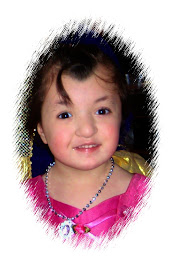A Call From God...
We've all heard of religious leaders getting a calling from God ... but have you actually seen one?
Below .. A Georgian Orthodox Monk on his mobile phone.
Caller ID ... OUT OF AREA ... "OH GOD ... Is that you?"

Today was Independence Day in Georgia.
While there were many celebratory events planed we were advise to stay clear as there were protests scheduled and in fact did occur as we saw on the local news this evening.
There was a large parade which would have been interesting as while we in the USA are used to the Rose parade and Macy's Thanks Giving parade this parade today involved the military.
A show of National pride, military strength and celebrating their Independence. It would have been a once in a life time experience for us but with little Tamara it would have been a risk we simply weren't willing to even consider.
~
Since many of the main streets in Tbilisi were closed today our agency staff here in Tbilisi suggested we leave the city and head to SVETITSKHOVELI about a half hour outside the city.
Since this is Georgian Independence Day and SVETITSKHOVELI has played such a huge part in their history and culture which ultimately has contributed to their survival and Independence I thought I'd focus on the importance of SVETITSKHOVELI.
We in the USA are always in awe of anything more then a few hundred years old as our country and culture is so young compared to the rest of the world.
I hope you enjoy this brief glimpse back in time as much as we did.
Truly fascinating.
~
SVETITSKHOVELI

Svetitskhoveli is the most important monument of the Georgian culture, art and architecture. The cathedral differs not only in it's artistic value, magnificence and harmony, but in the special role it has played in the history of the Georgian nation.
The period of the cathedral construction commencement (the begining of the 11th century) coincided with the most difficult and interesting epoch in the history of Georgia. Feudalism was at the summit of its development then. The combat for the unification of Georgia has successfully ended. The political and economic success coused national, spiritual, cultural, literary, philosophical, creative, architectural elevation and was marked by highly developed painting and goldsmith art. The architecture of cathedrals of a cruciform type has reached the highest level of development. The origin of it's national style has been generated by Jvari (CROSS) Monastary of Mtskheta (the 6th -7th cc.), which is the first completed and classical sample of such architectural form. It was in that very period that the most remarkable monuments of the Georgian architecture were built, such as: Alaverdi, Bagrati, Samtavisi, Samtavro, Nikortsminda, Manglisi, Ishkhani, and many other churches and cathedrals. Svetitskhoveli is the most special among the masterpieces of the Georgian architecture.
The history of Svetitskhoveli cannot be separated from the heroic past of Georgia. Construction of of Svetitskhoveli first building is connected with adoption of Christianity by the Georgian Kingdom at the beginning of the feudalism formation. Further on, as a result of a devastating raids of numerous enemies, various invaders tried to raze it. But due to the unbending will of their antcestors, their artistic energy and spiritual strength, the Cathedral always regained it's magnigicence, always remained a symbol of vitality, unconquerable nature of the country.
Svetitskhoveli, first of all, has been a religious center of Georgia, as it was the patriarchal cathedral, and residence of catholicos-patriarches, heads of the Georgian Church, weddings, christenings of the Georgian princes took place, it is also a burial place for Georgian kings, queens, princes and catholicos-patriarchs (some of the graves have been reserved in the Cathedral by now). When various invaders raided Georgia, Svetitskhoveli with its richest library has been an impaortant center of letters promoting spread of literacy. There exists evidence that the books were kept in special depositories, built in the walls, together with treasures.
Svetitskhoveli Cathedral preserved now is dated 11 th century.

At the begining of the 4th century East Georgian Kingdom offically adopted the Christain rligion. This resulted in commencement of the construction of churches. The first Georgian church was built just in the "holy grove", i.e. the royal garden, located in the place Mtkvari and Aragvi confluence. It was built by order of the first Christain King of Georgia Mirian in the 30's of the 4th century. This wooden construction was a small size, which is witnessed by the archaelogical excavations conducted recently of the cathedral. The remains of wooden pilasters discovered there were dated by the scholars as of the 4th century. This enabled to say for sure that the Svetitskhoveli Cathedral built by King Mirina's orders was a wooden construction.
In the second half of the 5th century, in the period of King Vakhtang Gorgasali's reign, the Georgian church gained independence, i.e. it became autocephalic (before that it had been subject to the Antioch Patriarchate). From that time on Matskheta has been declared a patriarchal residence with the cathedral in Svetitskhoveli. The city in that period was a center of Christianity nit only for Georgia, but the entire Cucasus. A small wooden church had no longer corresponded to the increased role and authority of the Christain religion, that was why the end of the 5th century King Vakhtang Gorgasali ordered to construct a larger stone construction of three-naved basilica type. It measures much exceeded the famous churches, such as Tsilkani, Bolnisi, Khashmi, etc. Nothing is left of that building now, as it has been greatly damaged over the centuries and it had to be reconstructed by the end of the 11th century.
The rehabilitation and reconstruction works were haeded by Catholicos-Patriarch Melchisedek I. By his order an architecct Arsukis-dze, at the begining of the 11th century, reconstructed an old basilica, into the cruciform construction. This marvelous masterpiece by Arsukis-dze, has been preserved by now with some alterations.
In the 11th century the works for constructing Svetitskhoveli commenced in the priod of the first King of Georgia Nargrat III (1001-1014). The main works were constructed in the reign of King Giorgi I (1014-1027) and the Cathedral has it's completed form in the period of King Bargrat IV (1027-1072). As a result of comparing different data it has been specified that Svetitskhoveli Cathedral was built for 19 years (1010-1029).
Svetitskhoveli occupies a central place in the composition of Mtskheta architectral ensemble. The Cathedral represents a cross set in the elongated quadrangle, finished and pyramidal, sixteen windowed dome from which the cross arms are stretched.

Above the caretakers... A Monk and Monkette...
tried to get a better picture but we didn't want to be rude.
OK.. back to your history lesson. ;o)
A tragic history of Georgia had it's heavy aftermaths on the Cathedral dome: as a result of devasting earthquake in Georgia at the end of the 13th century (1283) the dome fell down, it was repaired by Giorgi the Spendid in the first half of the 14th century. For the 2nd time the dome was destroyed by Tamerlane's (Timur Lenk) warriors at the end of the 14th century.
The Middle Asian conqueror had raided Georgia eight times. During one of his campains he ravaged Svetitskhoveli as we know from the chronicler. By some evidences, this raid took place during his 2nd campain in 1387. Tamerlane's devasting attack has been considered the most destructive among other numerous raids on Svetotskhoveli. Tamerlane's horders destroyed the Cathedral stone fence, plundered the gold decorated font, valuables and library books preserved in caches. They also decided to destroy the Cathedral itself. With this aim in view, by Tamerlane's order the Svetitskhoveli piers were broken, but the Cathedral it's self was not destroyed, onlt its dome fell down.
Alexsandre I restored the piers but had them m thicker to reinforce the construction, so that they lost their original beauty. Even today it's clearly seen how much the piers of the 11th and 15th centuries differ from one another. In the 11th century the arches were higher, the pier more refinded and beautiful. Out of three arches of the western arm, only two were left. So if the distance amaong the arches was originally equal, after the 11th century restoration the step of one of them twicw exceeded thet of another.
We can understand why it became necessary to thicken the piers for making them firm, if we take into consideration that each of these piers should bear 700 tons from the upper part of the Cathedral.
Mohammedan King Rostom of Karti (reigned 1632-1638) took great care of Svetitskhoveli. It was due to the virtue of his wife, Miram Dadiani, a true Christain and of great learning and wisdom. They had fundamental restoration works conducted for the damaged Cathedral, dome and contributed a great number of peasants. The contribution from the villiages was collected both in money and in kind (bread, wine, candles, cloth, etc.).
At the end of the 17th century Svetitskhoveli owned 1025 families of peasants and 237 villiages throughout Georgia.
 Tamara ... Are we having fun yet?
Tamara ... Are we having fun yet?
 Although a very interesting spot filled with history and culture it really wasn't a big hit with Tamara as you can see. There really aren't too many things in Tbilsi for little ones Tamara's age and size. :o(
Although a very interesting spot filled with history and culture it really wasn't a big hit with Tamara as you can see. There really aren't too many things in Tbilsi for little ones Tamara's age and size. :o(
We have also noticed that Tamara gets a little worried everytime we take her for a car ride. I think she's afraid we might take her back?
~~~








.jpg)
1+(6).jpg)






2 comments:
Tamara I'm with you. Nice History lesson but where's Disney World. LOL. Glad you three are enjoying the cities. Katie and Nick say hello and are wondering how you are doing. I told them you look happy and are doing well. Is all the paperwork done? Fingerprints? Bruce nice to see your with Tamara and your eyes are open. LOL
How about a new pic with the three of you. See ya soon. Thunder storm coming gotta go.
Ok I'm a bit slow. I just got the meaning of BLT. LOL LOL
Post a Comment